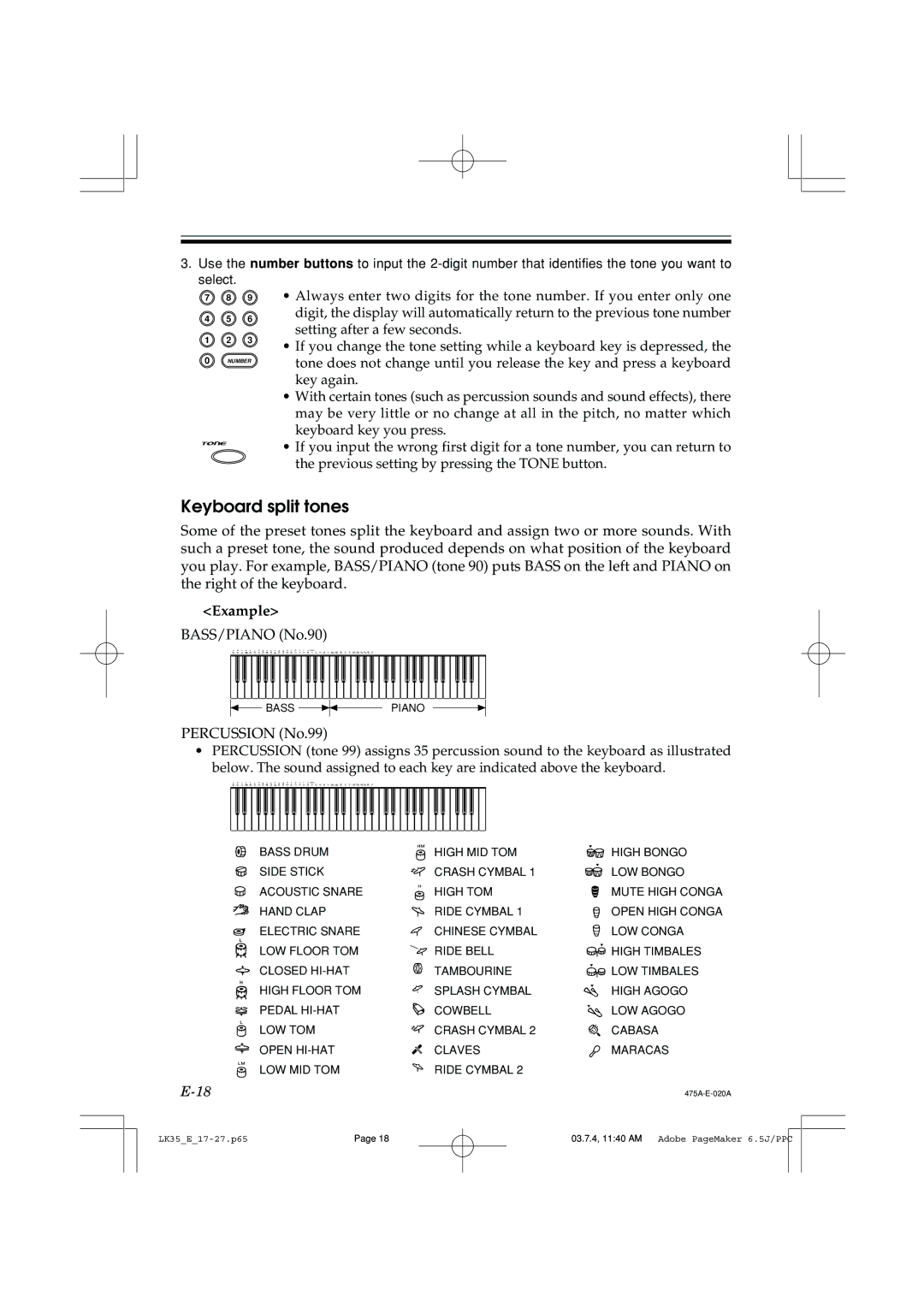
3.Use the number buttons to input the
7 | 8 | 9 | • Always enter two digits for the tone number. If you enter only one | |
4 | 5 | 6 | digit, the display will automatically return to the previous tone number | |
setting after a few seconds. | ||||
1 | 2 | 3 | ||
• If you change the tone setting while a keyboard key is depressed, the | ||||
|
|
| ||
0 | NUMBER | tone does not change until you release the key and press a keyboard | ||
| ||||
key again.
•With certain tones (such as percussion sounds and sound effects), there may be very little or no change at all in the pitch, no matter which keyboard key you press.
• If you input the wrong first digit for a tone number, you can return to the previous setting by pressing the TONE button.
Keyboard split tones
Some of the preset tones split the keyboard and assign two or more sounds. With such a preset tone, the sound produced depends on what position of the keyboard you play. For example, BASS/PIANO (tone 90) puts BASS on the left and PIANO on the right of the keyboard.
<Example>
BASS/PIANO (No.90)
BASS
PIANO
PERCUSSION (No.99)
•PERCUSSION (tone 99) assigns 35 percussion sound to the keyboard as illustrated below. The sound assigned to each key are indicated above the keyboard.
L
H
BASS DRUM | HIGH MID TOM | HIGH BONGO |
SIDE STICK | CRASH CYMBAL 1 | LOW BONGO |
ACOUSTIC SNARE | HIGH TOM | MUTE HIGH CONGA |
HAND CLAP | RIDE CYMBAL 1 | OPEN HIGH CONGA |
ELECTRIC SNARE | CHINESE CYMBAL | LOW CONGA |
LOW FLOOR TOM | RIDE BELL | HIGH TIMBALES |
CLOSED | TAMBOURINE | LOW TIMBALES |
HIGH FLOOR TOM | SPLASH CYMBAL | HIGH AGOGO |
PEDAL | COWBELL | LOW AGOGO |
LOW TOM | CRASH CYMBAL 2 | CABASA |
OPEN | CLAVES | MARACAS |
LOW MID TOM | RIDE CYMBAL 2 |
|
|
|
Page 18 | 03.7.4, 11:40 AM Adobe PageMaker 6.5J/PPC |
|
| |
|
| |||
|
|
|
|
|
